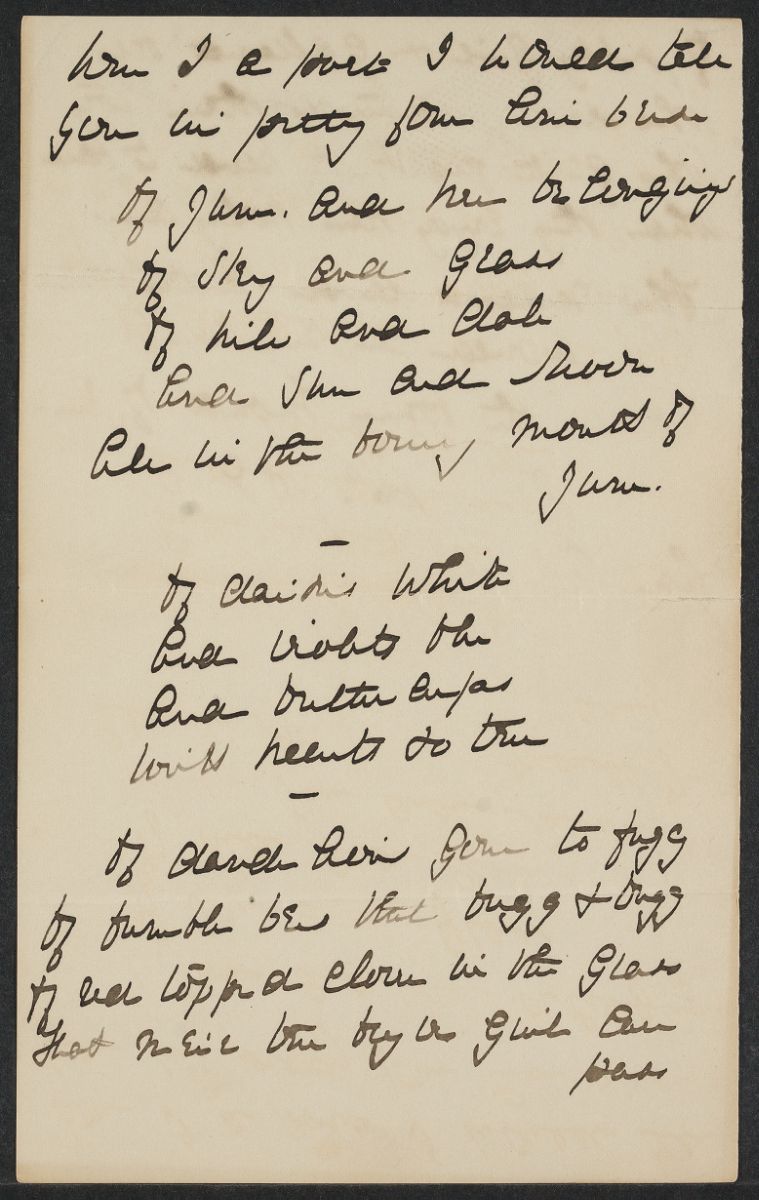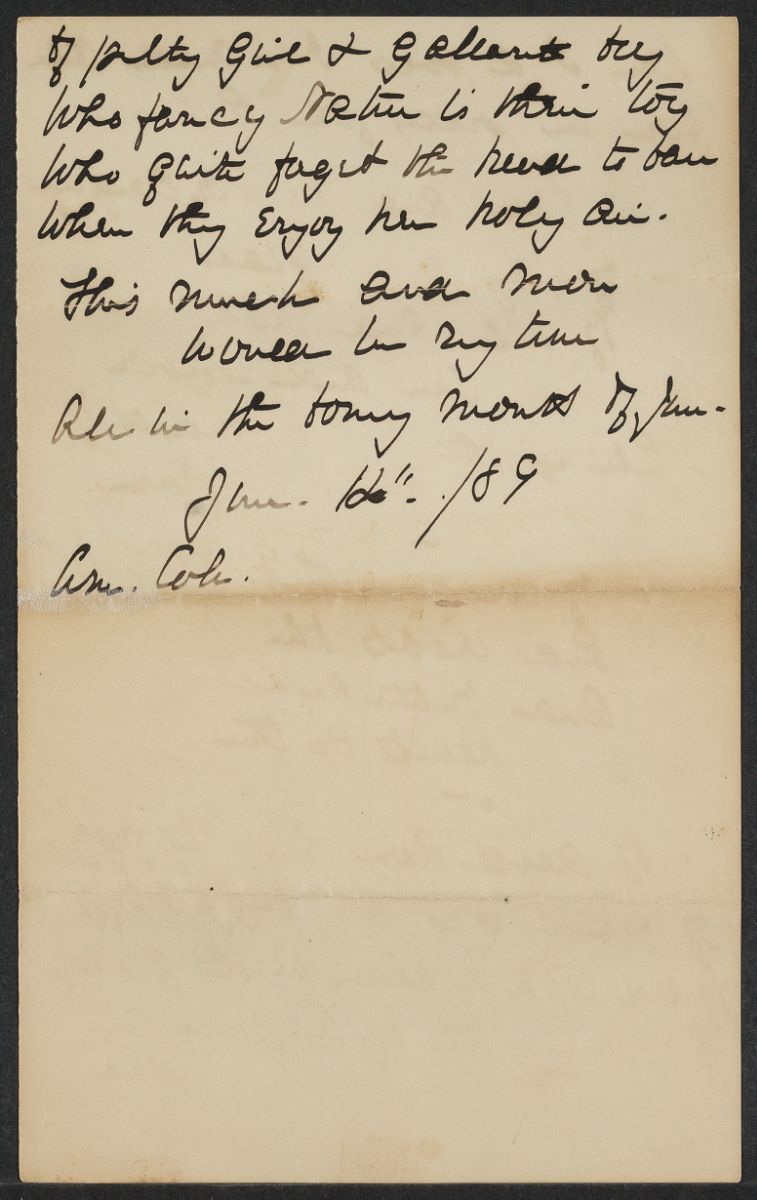<< Return to Poems
Of June, and her belongings
< transcription 1, transcription 2 >
NOTES
H bMS Am 1118.95, Box 9
Dated 1889. Ink. On two sturdy plain single leaves of stationery, folded in quarters. Clearly Susan is sending poems to someone, but to whom is not clear (though her 23-year-old daughter Martha is a probable candidate). This is dated after her death, yet echoes Emily's own practice of breaking out of an epistolary and into a poetic form.
This poem appears to be at play with several "popular" conventions. Singular in its exaggerated use of stock imagery, quaint sentiment and wholesome rhymes, it may be Susan's attempt at a parody of popular poetry and/or a spontaneous rhyme sent for fun to Martha. Seasonal verse and gift poems are commonplace in the nineteenth century, especially among upper-class women, and it seems likely that the poem is part of a continued exchange of drafts, fragments, musings and letters sent between mother and daughter or some other correspondent with whom Susan was familiar (see discussion of "Valentine's Day").
Though "Of June..." lacks the invention and imaginative power of Emily's playful, comic poems, it is important to note that Emily too seems to have taken delight in joyful, song-like verse, many examples of which extol the seasonal virtues of "bees" and "clover"; a few examples include "Buccaneers of Buzz...that subsist on Fuzz" (J 1405), written as late as c. 1877, and a Daffodil who "unties her yellow Bonnet...until the Bees, from Clover rows/ Their Hock and Sherry draw..." (J 134). Emily's poems of seasonal celebration also abound; Susan's own title "Of June and her Belongings" and the conceit therein closely resemble Emily's royal personification of Nature as in "Her [Nature's] sovereign People" (J 1139) sent to Susan with a flower. In the letter-poem and gifting tradition, Emily opens her note to Susan with the line "Rare to the rare" (an allusion to Shakespeare's "Sweet for the sweet") and signs it "Emily--".
Note too, the persuasiveness of the Romantic and idealized portrayal of nature and the wide-spread nineteenth century taste to which it appeals; Tennyson himself, dubbed by his contemporaries "the Poet of the People," and certainly among the most popular of Victorian poets in England and America, describes his famous "island of Shalott" as a place where "Willows whiten, aspens quiver,/ Little breezes dusk and shiver."





